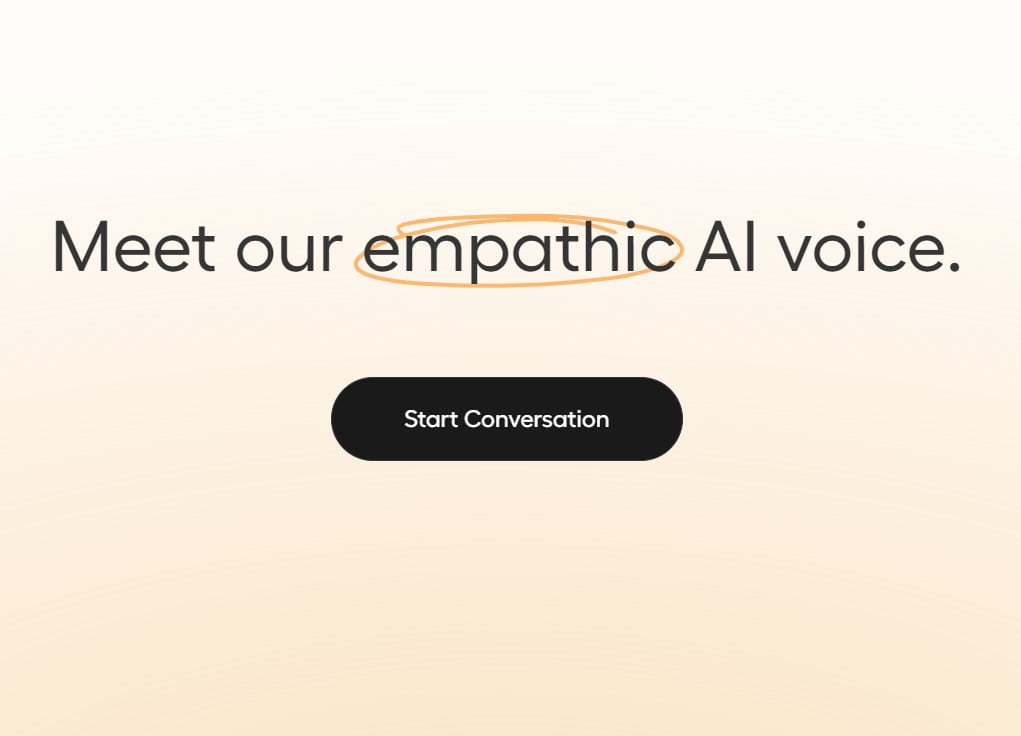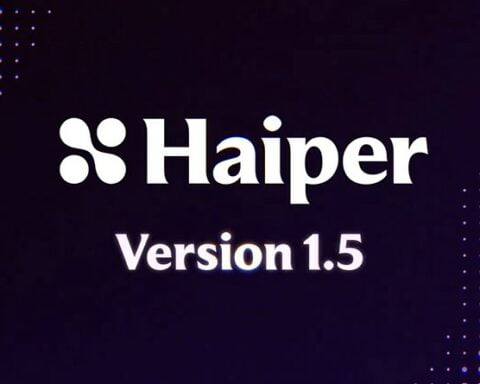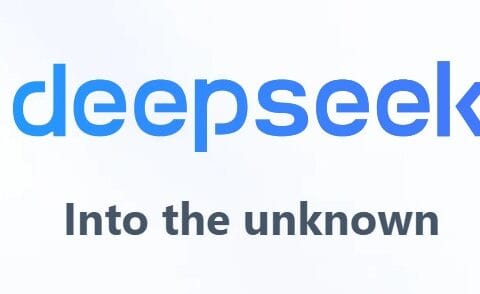Last Updated on March 29, 2024 1:07 pm by Laszlo Szabo / NowadAIs | Published on March 29, 2024 by Laszlo Szabo / NowadAIs
Conversational AI with Feelings: Empathic Voice Interface (EVI) by Hume.ai! – Key Notes
- Hume AI has developed EVI, the world’s first emotionally intelligent voice AI, aiming to change our communication with machines by understanding vocal expressions.
- EVI analyzes speech’s tune, rhythm, and timbre to generate empathic language, enhancing personal AI, customer service, and immersive gaming experiences.
- Funded by a $50 million Series B round led by EQT Ventures, Hume AI is accelerating AI research to further enhance EVI’s capabilities.
- EVI stands out by offering empathic responses, end-of-turn detection, and interruption handling, providing a more natural conversation flow.
Understanding the Power of Empathic Voice Interface EVI
There is a constant quest to create more human-like interactions between humans and AI systems. One innovation that has captured the attention of experts and investors alike is the Empathic Voice Interface (EVI). This technology, developed by Hume AI, introduces emotional intelligence to voice-based AI systems, hopefully changing the way we communicate with machines.
✨Talk to EVI, the world’s first emotionally intelligent AI now: https://t.co/vg10XxAPT0
EVI includes
– Transcription, language modeling, and TTS
– Expression understanding and generation
– Interruptibility and end-of-turn detectionWe trained our expressive TTS model and…
— Hume (@hume_ai) March 27, 2024
EVI is not just another voice assistant. It is the world’s first emotionally intelligent voice AI that goes beyond understanding and responding to words. By processing the tune, rhythm, and timbre of speech, EVI can analyze vocal expressions and generate empathic language with the right tone of voice. This breakthrough capability opens up new possibilities for personal AI, customer service, accessibility, robotics, immersive gaming, and virtual reality experiences.
The Journey of EVI: From Inception to General Availability
Hume AI has been at the forefront of emotional AI research and development. Their expertise and dedication have led to the creation of EVI, a game-changer in the field of conversational AI. The company recently announced a $50 million Series B funding round, led by EQT Ventures, which brings its valuation to an impressive $219 million.
The funding will be utilized to scale Hume’s team, accelerate AI research, and further enhance the capabilities of EVI. General availability of EVI is expected in April 2024, and developers can sign up for notifications to stay updated on its release.
What’s the Power of EVI?
EVI offers a wide range of features and capabilities that redefine the way we interact with AI systems. Let’s explore some of the key attributes that make EVI stand out from its counterparts:
1. Empathic Capabilities: Speaking the Language of Emotions
EVI is designed to respond with human-like tones of voice based on the user’s expressions. It adapts its language to address the user’s needs effectively, maximizing satisfaction. This empathic approach makes conversations with EVI feel more natural and engaging, creating a sense of connection between humans and machines.
2. Seamless Interaction: Recognizing the End of Conversation Turns
One of the challenges in AI-based conversations is the smooth transition between turns. EVI leverages the user’s tone of voice to accurately detect the end of a conversation turn, eliminating awkward overlaps. This state-of-the-art detection ensures seamless interactions, making the user experience more comfortable and fluid.
3. Interruption Handling: Mimicking Human Conversations
Just like a human conversation partner, EVI handles interruptions gracefully. It stops speaking when interrupted and effortlessly resumes from where it left off. This feature enhances the natural flow of the conversation, allowing users to engage with EVI in a manner that feels intuitive and lifelike.
4. Continuous Improvement: Learning from User Reactions
EVI is not a static AI system; it continuously learns and improves based on user reactions. By optimizing for happiness and satisfaction, EVI aims to provide personalized and tailored responses, enhancing the overall user experience. This self-improvement capability ensures that EVI evolves and adapts to individual preferences over time.
The Science Behind EVI: Semantic Space Theory
Hume’s expression measurement models are derived from semantic space theory (SST), a revolutionary computational approach to mapping out emotional behaviors in a dimensional space pioneered by our CEO & Chief Scientist @alancowen. pic.twitter.com/kJEwt8YrmQ
— Hume (@hume_ai) March 6, 2024
The foundation of EVI’s emotional intelligence lies in semantic space theory (SST). This data-driven framework for understanding emotions enables Hume AI to train its models and develop products that capture the full spectrum of human emotion. SST maps the high-dimensional nature of emotions and reveals the continuity between emotional states, further enhancing EVI’s ability to comprehend and respond to vocal expressions.
Building with EVI: An Immersive Experience
Developers can harness the power of EVI by integrating it into their applications. Hume AI provides a suite of tools, including a WebSocket API, REST API, and SDKs for Typescript and Python, to simplify the integration process. These resources enable developers to create seamless and immersive voice-based interactions with EVI.
1. WebSocket Connection: Enabling Real-time, Bidirectional Dialogue
The primary way to work with EVI is through a WebSocket connection, which facilitates real-time, bidirectional dialogue between the user and the AI system. By streaming audio input to EVI and receiving responses in real-time, users can enjoy fluid and natural conversations with the AI.
2. Text and Voice Responses: Enhancing User Interaction
EVI responds to user input in multiple ways. It generates text responses, expressive audio responses, and transcripts augmented with vocal expression measures. This holistic approach ensures that users receive comprehensive and engaging feedback from the AI system.
3. Error Handling and Completion Notifications: Smooth User Experience
EVI provides detailed error messages if any issues arise during the conversation. Additionally, it notifies users when it has finished responding, allowing for a more seamless and satisfying user experience. These features enhance the reliability and usability of EVI in various applications.
Empowering Developers: Tools and Resources
To empower developers and facilitate the integration of EVI into their projects, Hume AI offers a range of developer tools and resources. Let’s explore some of the key components:
1. WebSocket API: Real-time Interaction Made Easy
The WebSocket API serves as the primary interface for real-time, bidirectional interaction with EVI. It handles audio and text transport, facilitating smooth communication between the user and the AI system. Developers can leverage this API to create dynamic and interactive voice-based applications.
2. REST API: Customizing EVI to Suit Your Needs
For developers seeking greater customization options, Hume AI provides a REST API. This configuration API allows developers to tailor EVI according to their specific requirements. From system prompts to speaking rates and voice preferences, developers have the flexibility to shape EVI’s behavior and responses.
3. SDKs for Typescript and Python: Simplifying Integration
To simplify the integration process, Hume AI offers SDKs for Typescript and Python. These software development kits encapsulate the complexities of audio streaming and WebSocket communication, making it easier for developers to integrate EVI into their web and Python-based projects.
4. Open-Source Examples and Web Widget: Practical Starting Points
Hume AI provides open-source examples and a web widget to help developers explore and implement EVI’s capabilities. These resources serve as practical starting points, showcasing how EVI can be integrated into different projects and applications. Developers can leverage these examples to kickstart their EVI integration journey.
Applications of EVI: Transforming Industries
The potential applications of EVI are vast, with implications across various industries. Let’s delve into a few examples that illustrate how EVI can revolutionize different sectors:
1. Healthcare: Enhancing Patient Care
In the healthcare industry, EVI can play a crucial role in improving patient care. For instance, the Icahn School of Medicine at Mount Sinai is using Hume’s expression AI models to track mental health conditions in patients undergoing experimental deep brain stimulation treatments. EVI’s ability to understand and respond to vocal expressions enables more accurate monitoring and support for patients.
2. Customer Service: Elevating the User Experience
In the realm of customer service, EVI can enhance the user experience by providing empathic and personalized support. For example, the productivity chatbot Dot leverages Hume’s AI to offer context-aware emotional support to users. By understanding the user’s vocal expressions, EVI can provide tailored responses that cater to their specific needs and emotions.
3. Productivity Tools: Enabling Seamless Interactions
EVI can also transform productivity tools by enabling seamless voice-based interactions. With EVI integrated into applications like virtual assistants and task management tools, users can effortlessly communicate their needs and receive relevant information or assistance. This hands-free and intuitive mode of interaction enhances productivity and efficiency.
Looking Ahead: OpenAI’s Voice Engine and the Future of AI
While EVI represents a significant advancement in AI-powered voice interfaces, other players in the industry are also exploring the potential of voice-based AI systems.
OpenAI, for instance, is developing a Voice Engine that incorporates features like voice and speech recognition, text-to-speech conversion, and generating voice and audio outputs. This ongoing research and development highlight the continuous evolution of AI technology and its potential for more immersive and personalized experiences.
In conclusion, the Empathic Voice Interface (EVI) developed by Hume AI marks a significant milestone in the field of conversational AI. By infusing emotional intelligence into voice-based AI systems, EVI enables more natural and engaging interactions between humans and machines.
Definitions
- Empathic Voice Interface (EVI): An advanced voice AI developed by Hume AI that can process and respond to human emotions conveyed through speech, aiming to create more human-like interactions.
- HUME.ai: A company specializing in emotional AI research and development, focused on creating technologies like EVI that understand and respond to human emotions.
- Semantic Space Theory (SST): A framework for understanding emotions in a data-driven manner, allowing AI models to capture and respond to the full spectrum of human emotional states.
- REST API: A set of rules for building web services that allow for interaction with EVI through HTTP requests, enabling developers to customize and control EVI’s behavior.
- WebSocket API: A technology providing full-duplex communication channels over a single TCP connection, allowing for real-time interaction between users and EVI.
- SDK: Software Development Kit, a collection of software development tools in one installable package, facilitating the integration of EVI into applications.
- Open-source: Software for which the original source code is made freely available and may be redistributed and modified.
Frequently Asked Questions
- What makes EVI different from other voice AI technologies?
- Unlike traditional voice assistants, EVI processes the emotional context of speech, enabling it to respond with empathically appropriate tones and language. This emotional intelligence fosters more natural and meaningful interactions between humans and AI.
- How can EVI enhance customer service experiences?
- EVI can transform customer service by providing support that understands and adapts to the caller’s emotional state, leading to more satisfying and effective resolutions. Its ability to detect nuances in speech ensures a smoother and more personalized service.
- What are the key features of EVI?
- EVI’s key features include empathic understanding and response generation, seamless conversation turn detection, graceful interruption handling, and continuous learning from user reactions, making it a revolutionary tool in voice AI.
- How does EVI learn and improve over time?
- EVI utilizes user feedback and reactions to refine its responses, ensuring that it evolves to meet users’ needs more accurately. This learning mechanism enables EVI to offer increasingly personalized and relevant interactions.
- What potential applications does EVI have across industries?
- EVI’s empathic capabilities open up applications in healthcare for patient support, in customer service for enhanced user experiences, and in productivity tools for intuitive, voice-driven interactions, among others.












